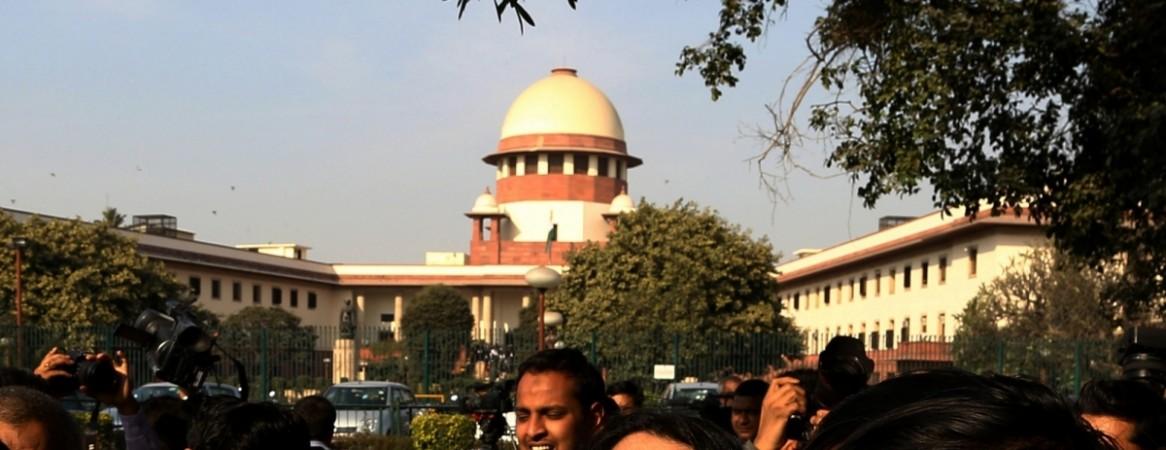
The Supreme Court on Wednesday approved India's first witness protection programme and has asked all the states and union territories to enforce it in 'letter and spirit'.
The decision to implement the scheme was made by the Centre, the National Legal Services Authority (NALSA), 18 states, and legal help from at least five states, civil services, high courts as well as police personnel.
The scheme will be a law under Article 141/142 of the Indian Constitution. The court also said that right to life would include right for witnesses to testify freely in courts. The implementation of the witness protection programme put forth during the trial of rape-accused self-styled godman Asaram Bapu, when a PIL was filed to protect witnesses.
According to an Indian Express report, the Supreme Court bench chaired by Justices A K Sikri and S Abdul Nazeer said, "The right to testify in courts in a free and fair manner without any pressure and threat whatsoever is under serious attack today. If one is unable to testify in courts due to threats or other pressures, then it is a clear violation of Article 21 of the Constitution. The right to life guaranteed to the people of this country also includes in its fold the right to live in a society, which is free from crime and fear, and the right of witnesses to testify in courts without fear or pressure."
"There are many threats faced by the witnesses at various stages of an investigation and then during the trial of a case... These witnesses neither have any legal remedy nor do they get suitably treated. The present legal system takes witnesses completely for granted. They are summoned to court regardless of their financial and personal conditions" and are "not even suitably remunerated for the loss of time and the expenditure towards conveyance etc," the court added.
Categories of witnesses
The programme has three categories of witnesses which describe the threat levels that the witnesses face.
- The first category is about the danger that witnesses and their family members could face during and after the investigation or trial.
- The second is for the safety, property and reputation of the witnesses who are threatened during or after the investigation and trial.
- The third and last category extends to threatening or intimidating the witnesses and their family members during or after the trial.
Aim of the scheme
According to Indian Express, the aim of the scheme is "to ensure that the investigation, prosecution and trial of criminal offences is not prejudiced because witnesses are intimidated or frightened to give evidence without protection from violent or other criminal recrimination".
A witness protection fund will be set up by states and union territories and also accept donations from benevolent organisations.
To get into the witness protection programme, an application should be filed with an authority along with the required documents. The in-charge Assistant Commissioner of Police or the Deputy Commissioner of police will then give his "Threat Analysis Report" in which the police officer will explain the threat level and suggest protective measures. Within five days of receiving the threat report, the authorities will have to make a decision.
The court has directed the state police, which will be in charge of protecting the witnesses in the programme, to set up complexes with rooms that ensure witnesses and accused to avoid meeting or even seeing each other. These deposition complexes will be in place by 2019.










![Sky is the limit: IndiGo is now tenth largest airline by capacity globally; growth indisputable [details]](https://data1.ibtimes.co.in/en/full/767454/sky-limit-indigo-now-tenth-largest-airline-by-capacity-globally-growth-indisputable-details.jpg?w=220&h=138)






